Oman Perfumery LLC, Oman
Thousands of years ago, one of the world’s most traded commodities was frankincense, a resin obtained from boswellia sacra, a small, deciduoustree that grows up to 8 meters tall and is native to the Arabian Peninsula and northeastern Africa. In the Sultanate of Oman (Oman), frankincense – also known as the “gold of the desert” – is just one of many ingredients that have been used in the country since time immemorial to make fragrances and incense, which play an important role in Omani culture. A land of seemingly unlimited scents, professional producers of bakhoor (incense made of woodchips soaked in fragrant oils) can be found in the souqs (traditional markets) of communities throughout the country. Whether it is welcoming a guest, celebrating the birth of a child, or simply heading out of the house, fragrances are part of the way in which Omani people express themselves and are integral to daily life, festivities, and cultural rituals in Oman.
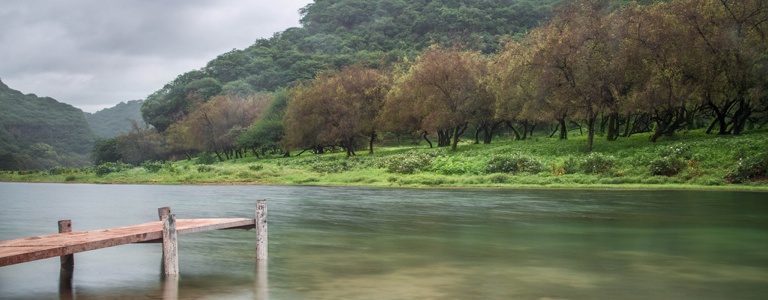
Acutely aware of the importance of fragrances in Omani culture – and locally sourced ingredients such as frankincense, myrrh, and rosewater in particular – in 1983 the Sabco Group, a private holding company owned by the Omani royal family, launched Oman Perfumery LLC, a niche luxury fragrance house known publically as the House of Amouage (Amouage, which means “waves of emotion”). The new perfumery started with two main objectives: first, to sustain the fragrance industry in Oman through the production of modern perfumes that could compete in the international market; and second, to reflect and disseminate the heritage and traditions of Oman through these perfumes. In line with these goals, the company has developed award-winning perfume brands and unique and recognizable bottle designs, which are protected by the intellectual property (IP) system. As a result, Amouage has become one of Oman’s most recognized brands and has created some of the most prized perfumes in the world.
Goods with specific geographical origin
Encompassing the southeastern quarter of the Arabian Peninsula, Oman has a predominantly hot and dry climate. Temperatures range from 53 degrees Celsius (°C) in the summer to as low as 18°C in the winter. The Dhofar region in the southern part of Oman, however, has a markedly different climate than the rest of the country. A combination of desert, coastal plains, and mountains, it is also the only region in Oman that has a tropical climate with a distinct monsoon season – known as khareef – from June to September. During kahreef the mountains become rain soaked, vegetation thrives, and cities such as Salalah, the capital of Dhofar, rejuvenate their water supplies. This has made the region a popular destination for those looking for a break from the heat.
The diverse and unique climate of Dhofar also creates ideal conditions for the boswellia sacra tree to thrive, especially in the region’s wadis (valleys) and dried riverbeds. Indeed, this species prefers an arid climate that receives moisture only in the form of morning mist and yearly monsoons. The steep, jagged mountains of Dhofar (which rise up to 2,500 meters) and the lower steppes and foothills provide the cooler temperatures that are ideal for the frankincense tree, which can grow at an altitude up to 1,200 meters. Furthermore, the soil that makes up these areas is relatively acidic and mostly composed of calcium carbonate, providing the essential composition for the tree to flourish.
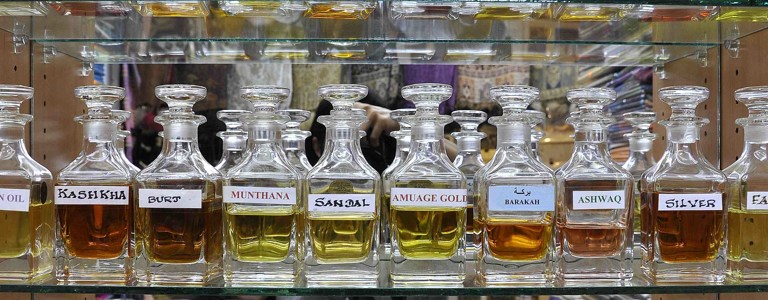
One specific area of Dhofar has been so essential for the production of frankincense that it became inscribed as a World Heritage Site by the United Nations Educational, Scientific and Cultural Organization in 2000. Called the Land of Frankincense, it includes a number of locations integral to the frankincense trade such as Wadi Dukah, an area that lies in the northern slopes of the Dhofar region, approximately 25 kilometers north of Salalah. The climate is so unique and geographically limited that thousands of years ago stakeholders in frankincense groves in the region developed stories of toxic mists and flying serpents that protected the groves, in an aim to keep the habitat a secret and their grip firm on this limited and highly sought after resource.
While frankincense is perhaps one of the most well known fragrances to come from Oman, it is not the only one. On the other side of the country in the northeastern Hajar Mountain range, the highest in the Arabian Peninsula, roses grow in abundance on the slopes of the Jebel Akhdar (meaning the Green Mountains) region. While the mountain range is mostly desert, higher altitudes (reaching over 3,000 meters) bring cooler temperatures and more precipitation, making ideal conditions for numerous species of shrubs and trees – such as roses – to thrive.
Rosewater, a byproduct of the production of rose oil for perfume, holds an important cultural place in Oman. Traditional uses in the country for rosewater include religious ceremonies, food (such as sweets), beauty products, and as a fragrance used on clothing, furnishings, and when welcoming guests. The geographical conditions of Jebel Akhdar mean that the roses only bloom for a few weeks in April, but this short season gives the roses a vibrant, strong smell, which increases the value of the rose petals and rosewater.
Yet another tree native to Oman that is used for fragrances is the commiphora myrrha (or the “common myrrh”). A spiny tree that grows to a height of approximately 4 meters, it thrives in thin, acidic soil with high concentrations of calcium carbonate and grows at altitudes up to 1,300 meters, which are conditions common to the Dhofar region. Myrrh, along with frankincense and rosewater, have ancient uses (such as medicinal and religious) that are still recognized today, and they form the basis for many fragrances in Oman, including Amouage perfumes.
Traditional knowledge
Harvesting frankincense and myrrh is a traditional process perfected over thousands of years that takes great skill. There are two types of harvesting, which differ depending on the time of the year. When temperatures start to rise in the warmer months (August to October), skilled harvesters use a special knife – the manghaf – to strategically cut the branches and trunk of the tree. The first series of cuts, or tawqii, results in a flow of sticky resin that quickly solidifies. The tree is marked and left for approximately two weeks, after which it is cut again, the resin flows more freely, and it is ready to be harvested.

In the colder months (January to March) a slightly different harvesting technique is implemented. A series of cuts are made in the tree but, because of the cooler temperatures, the resin does not flow as quickly or freely as it does in the warmer months. The tree is marked and left alone for approximately four weeks, as the resin continually and slowly moves from the tree to the wound and dries up in the form of small drops and beads. These coalesce over time to become large spherical shapes, sometimes reaching the size of a chicken egg before they are harvested. Harvesting is repeated over a period of approximately three months, with each tree ideally harvested twice per year, once in the warmer months and once in the colder months. Every five to six years the trees are rested for a few years, as this results in finer quality resin.
Harvested resin comes in various colors, ranging from yellow and brownish to pure white. These colors represent the grade of the frankincense or myrrh, which also differ by individual trees as even slight differences in soil and climate yield diversity in the resin, even among the same species of tree. For example, some particularly hardy trees grow right directly out of rock and their resin is considered by those in the industry to be some of the finest available. Once the resin is harvested, experts grade it and then it is aged for approximately twelve weeks before reaching the market or being used in products such as perfumes.
Once harvested, frankincense, myrrh, and rosewater have many traditional uses, which are imbued in the way in which Amouage perfumes are created. Uses differ according to the ingredient and species of the tree or shrub. For example, frankincense from the b. frereana species is soft and a translucent lemon and gold color, making it perfect for use as a chewing gum. Frankincense has also been used as a natural insecticide, driving away pests and helping to reduce the incidences of transmission of serious diseases such as malaria. Myrrh and frankincense are also prized as a treatment for infections and wounds, to alleviate inflammations and skin disorders, and as a remedy for other ailments such as indigestion, fever, coughs, and nausea. As in ancient times, frankincense, myrrh, and rosewater have been used as a perfume, food and drink flavoring, and toothpaste. Furthermore, they have a long history of continued use in religious ceremonies and traditions.
Research and development
When the company first endeavored to bring Oman’s tradition of fragrances into the modern era, it was important that Amouage’s first fragrance captured the heritage of the country, reflecting its historical position as the source of fine fragrances. To that end, the perfumery secured the services of Mr. Guy Robert, a renowned developer of perfumes for some of the world’s leading brands. The vision was for Amouage to develop into a niche luxury brand, and the company’s research and development (R&D) team, led by Mr. Robert, worked to develop the most valuable perfume in the world.
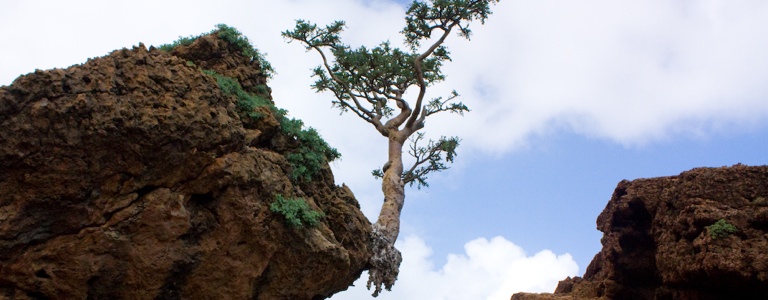
In the creation of the first line of the perfumery’s products, Mr. Robert was inspired by two of Oman’s most well known ingredients – frankincense from the Dhofar region and roses from the Jebel Akhdar region – to form the core of the fragrance. These were infused with over 100 other ingredients – which Mr. Robert termed his “ultimate symphony” – including Omani myrrh, jasmine, lily of the valley, sandalwood, ambergris, civet, and musk. The result was Amouage Gold (for women and men), which Mr. Robert considered to be the finest achievement of his career.
Launched in 1983, Amouage Gold would be the starting point for the perfumery’s subsequent R&D and new fragrances. As the company built a base, requirements of the fragrance industry prompted changes in its R&D process. For example, the International Fragrance Association, an international body based in Geneva, the Swiss Confederation (Switzerland), that regulates the fragrance industry, has deemed certain ingredients to be allergens. Natural frankincense is included in this list, and as such Amouage had to adjust its R&D to rely on synthetic molecules. This has led the perfumery to invest heavily in R&D not only in regards to the combination of ingredients, but also in regards to the chemical nature of synthetics. As Amouage’s CEO, Mr. David Crickmore explains, “To be in the perfume industry you have to be a chemist.”
Throughout the development of new products, Amouage adopts an eclectic approach, retaining strong ties to Oman while developing new and original fragrances that have broad international appeal. For example, the perfumery uses traditional ingredients (and synthetics of these when required) such as frankincense, myrrh, and rosewater from Oman as a base and then sources complementing ingredients. “We search for the finest possible ingredients, the rarest ingredients,” said Mr. Crickmore, which helps to keep the company’s products unique.
To remain competitive, highly trained and internationally recognized perfumers in the town of Grasse, the French Republic (France), create all of the company’s fragrances. In 2007, Mr. Christopher Chong joined the company as Creative Director. Based in London, the United Kingdom (UK), Mr. Chong draws inspiration from literature, art, film, and music to lead the development of the company’s line of fragrances, which creates products that are unique and at the same time linked. “Since I joined Amouage,” explained Mr. Chong, “I decided that all my creations should be related to one another rather than creating one fragrance one year which is entirely irrelevant to the one before or next. All of my creations are interlinked by a narrative, which continues from perfume to perfume.” Through this multi-dimensional R&D approach, the company has created a succession of many popular perfumes such as Jubilation, Lyric, Epic, Fate, and the Library Collection.
Industrial designs
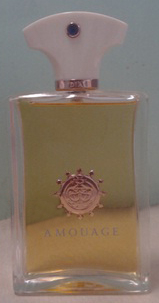
design, protected by the IP
system (OHIM Design
#002083824-0001)
Almost as important as the fragrance itself, the packaging of perfumes and other products is essential to success and the development of a brand image. Amouage is well known for its bottles that have caps shaped like the handle of an Arabian dagger, and which were first used in its Gold line of perfumes. The company has also developed unique bottle designs for its other flagship products. For example, the bottle caps for Jubilation 25 (for women) and Jubilation XXV (for men), a line introduced to coincide with the perfumery’s 25th anniversary, resemble the dome of the Sultan Qaboos Grand Mosque in Muscat, the capital of Oman. Reiterating the importance of Amouage’s industrial designs, Mr. Crickmore explained, “We like to remind people we’re a royal brand.”
Because the packaging and design of the perfumery’s products is a significant aspect of its brand image, Amouage relies on the IP system to protect its industrial designs. With a focus on the niche luxury market, the company recognized early on that it was key to register its industrial designs in regions such as North America and Europe. To that end, in August 1985 Amouage made two applications to the United States Patent and Trademark Office (USPTO), one for its unique dagger-shaped perfume bottle and another for Amouage’s logo, which is a stylistic crest that evokes the brand’s origin. Both applications were registered in October 1986.
Over 25 years later and with the company expanding internationally, Amouage sought to protect its unique perfume bottle designs through applications with the Office for Harmonization in the Internal Market (OHIM), the registering authority in the European Union (EU) for trademarks and industrial designs. In August 2012 two of Amouage’s bottle designs were successfully registered with OHIM. The first design was for the Jubilation 25 (women) and Jubilation XXV (men) perfumes, which features the unique bottle cap that resembles the dome of the Sultan Qaboos Grand Mosque. The second design is that of the well-known dagger-shaped Amouage bottle. With these registrations, the perfumery has successfully protected its designs by the IP system in some of its most important markets.
Trademarks
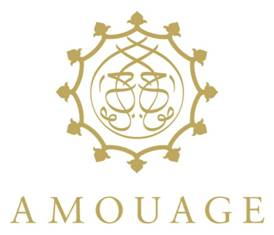
(CTM #007441496)
Equally important to Amouage’s industrial designs are the perfumery’s product names, which help in the development of a strong brand and international expansion. To that end, the company has taken steps to protect its name and brand image in major markets. In August 1985, the perfumery applied for trademark protection with the USPTO for the Amouage name, which was registered in October 1986. Some years later, in February 2009 the company filed an application for a modified version of its name and logo that was registered with the USPTO in 1986. The application was registered in May 2011.
In the EU, Amouage took similar steps to utilize the IP system. In October 2001, the company made an application to OHIM for a combination logo and stylized name, which was registered in May 2003. The perfumery subsequently made an application for an updated version of its name and logo in December 2008, which was registered in August 2009. In May 2011 Amouage made another application for a slightly modified name and logo for use in its new line of products, which was registered in October 2011. To coincide with the perfumery’s launch of its new Library Collection, it made a trademark application for Library Collection Opus Amouage in November 2013 and a word mark application for Library Collection with OHIM in 2014.
Keen to facilitate expansion of its activities in other markets, the perfumery has also made registrations with the Intellectual Property Office of Singapore (IPOS) for its stylized name and logo with the phrase The Gift of Kings underneath. Amouage has made applications with IPOS that have been registered under a number of classes in Singapore, such as for fragrances (class 3), perfumed candles (class 4), and fragrant preparations for deodorizing a room (class 5). In addition, the company also expanded its scope to the Oceania region, making applications with IP Australia through which it has received trademark registrations for the perfumery’s original stylized name and logo (2005) and updated version (2008). In 2011, the company applied for a trademark for its name and The Gift of Kings phrase with the Intellectual Property Office of New Zealand, which was registered in February 2012.
Trademark registrations such as these are vital to the company as they connect the customer with the brand and hold significance to the brand’s country of origin. While Amouage works to become an international brand, the perfumery also retains a connection to its Omani roots through its company and product names, which are protected by the IP system.
Branding
When Amouage first launched, the perfumery aimed to create the first Omani luxury perfume brand. Indeed, the company’s first product – Amouage Gold – created by Mr. Guy Robert is, according to leading perfume critic Mr. Luca Turin, “…one of the greats of all time.” From the company’s launch in 1983 until the early 1990s, the success of Mr. Robert’s creation helped Amouage on its path to achieving its goal. However, as the 1990s went on, the perfumery faced a challenge in developing its brand internationally.

Fragrances in Oman have a long history of being based on pure oils and resins, such as those that come from the frankincense and myrrh trees. This yields scents that have a lasting power but could be considered to be overly strong by those customers outside of the country and the Middle East region. For example, typical fragrances in Europe and North and South America tend to use more alcohol to lighten the scent and contain a lower concentration of pure oils and resin. Amouage brands are recognized as a fusion of these two types of fragrances. However, in the 1990s the company faced difficulties following up on the international success of Amouage Gold with another equally impressive product. While the perfumery was growing in the Middle East, it had long-term aspirations of international expansion of the Amouage brand.
By the mid 2000s, the perfumery took steps to turn around its brand image and help it grow internationally, one of the first of which was hiring Mr. David Crickmore, a veteran of the luxury goods industry with over three decades of experience, as the new CEO. “When I was brought in, it was a predominantly Gulf-oriented brand,” explained Mr. Crickmore when discussing his first years at Amouage. “They felt that a fairly major change was required.” One of the new CEO’s first moves was to hire Mr. Chong as Creative Director, which significantly changed the perfumery’s approach to developing new products.
With this new approach put into practice, Amouage was able to turn around its brand image by releasing a number of successful fragrances. The art direction and meaning behind each of the company’s products have become just as important as the ingredients themselves, and in a few short years helped propel Amouage to not only continue its role as a strong Omani brand, but also as a successful international brand. “It is a brand that travels all over the world,” said Mr. Chong. Moreover, in 2007 the company revealed a new, modernized logo to coincide with its re-branding initiative and new products, merging the perfumery’s rich history and success with a new vision and identity. These efforts have helped the company become a unique and leading niche luxury fragrance brand.
Commercialization
The process of commercializing new Amouage products takes place across several continents. At the start, Mr. Chong develops a preliminary brief that describes the artistic vision for a new product. This brief is sent to professional perfume blenders and testers in the town of Grasse in southern France (known in the industry as the “perfume capital of the world”). Known as “noses,” these professionals develop the scent by first creating solutions of various ingredients based on the brief received from Mr. Chong. They then test the solutions by dipping slender blotters, or mouillettes, into each one and sniff them at regular intervals to determine what should be added or removed to achieve the artistic vision of the fragrance. Undertaking this process in Grasse helps Amouage products meet a high level of international standards to remain competitive.
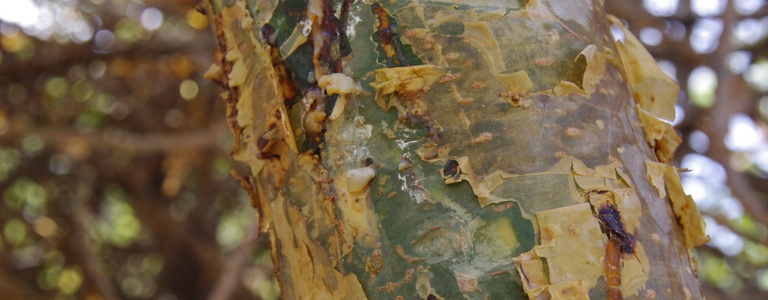
When the samples are ready the best is chosen and sent to the company’s factory in Oman, where it is produced on a larger scale, mixed lightly with alcohol, and then left to sit during a process known as maceration, which takes approximately eight weeks and allows all of the ingredients of the new fragrance to blend together. Following this process the perfume is ready for bottling and packaging. Bottles are produced exclusively for Amouage by Asprey, a designer and manufacturer of jewelry, silverware, and other goods and based in London, UK. The perfumery prides itself on the concept that its products are created with care and great attention to detail, so the use of machinery is limited. Indeed, most of the manufacturing process is done by hand, including decorating and filling the bottles, quality control, and package assembly. Each box of the company’s products has a small note inscribed with “Thank you for choosing Amouage” followed by the name of the person who packaged it by hand.
Once the fragrances have been created, produced, and packaged, they are shipped for sale to a variety of locations. These include Amouage’s factory and the company’s flagship store in Sabco Centre in Muscat; at the perfumery’s boutique stores in countries such as the United Arab Emirates, the Kingdom of Saudi Arabia, Malaysia, the Kingdom of Bahrain (Bahrain), and the State of Kuwait; at the Amouage Flagship Store in London, UK; and at over 400 other retailers in over 30 countries throughout the world. In addition, the company offers Amouage products for sale through its online shopping service.
Public health
In December 2010, to coincide with the international launch of Amouage’s Opus IV fragrance in its Library Collection, the company announced an initiative in which it would work with the National HIV/AIDS Prevention and Control Program (NAP) in Oman. Supported by the Ministry of Health of Oman, the World Health Organization, the United Nations Children’s Fund, and the United Nations Population Fund, NAP in Oman works to reduce HIV and AIDS transmission and infection rates in the country. Inspired by the worldwide fight against AIDs, “Opus IV is our contribution to raising awareness on this growing epidemic across all corners of the globe, which today is one of the world’s most pressing public health matters,” explained Mr. Chong. To that end, Amouage pledged fifty percent of all of the proceeds from Opus IV to be donated to NAP in Oman.
Business results
Founded to sustain the millennia-old traditions of Omani perfumery, Amouage has turned from an unknown name into a leading fragrance company. This success has resulted in Amouage being the only globally distributed luxury brand from Oman and the first Arabian perfumery to launch a standalone flagship store in the exclusive district of Knightsbridge in London, the UK, in 2010. In 2012, the company continued its international expansion with standalone stores in Bahrain and Malaysia.
In December 2012, the perfumery celebrated the start of its thirtieth year and international expansion by opening a new factory and visitors center in Muscat. Built on the site of the company’s previous headquarters, the factory has a production capacity of 20,000 bottles per week, which will help to ensure that Amouage can keep up with current and future demand. Furthermore, the perfumery has enjoyed international recognition of its products. In 1991, Amouage won the Star Product of the Year Award by Frontier Magazine, an international business magazine based in the UK. Professionals and internationally renowned critics in the perfume industry have also recognized the company’s products, such as Mr. Luca Turin and Mr. Chandler Burr, who described the company’s Ubar and Lyric Women products as “five-stars” and “excellent,” respectively.
A Land of fragrances
Stepping into a souk in Oman, one will quickly see that the country is truly a land of fragrances. Tracing its roots back thousands of years, fragrances have been integral to the people and culture of Oman. Amouage has taken that heritage and fused it with a creative and original development process, a strong brand image, and innovative designs to develop one of the world’s foremost lines of niche fragrances. Combined with protection by the IP system, the perfumery is poised to continue to bring the heritage, culture, and fragrances of Oman throughout the world.
Source: WIPO

 Client Focus
Client Focus